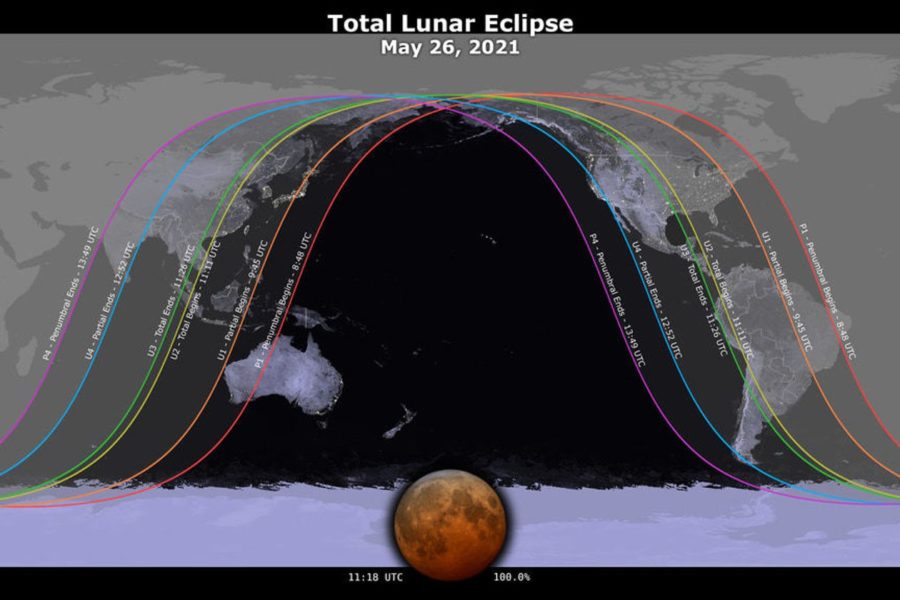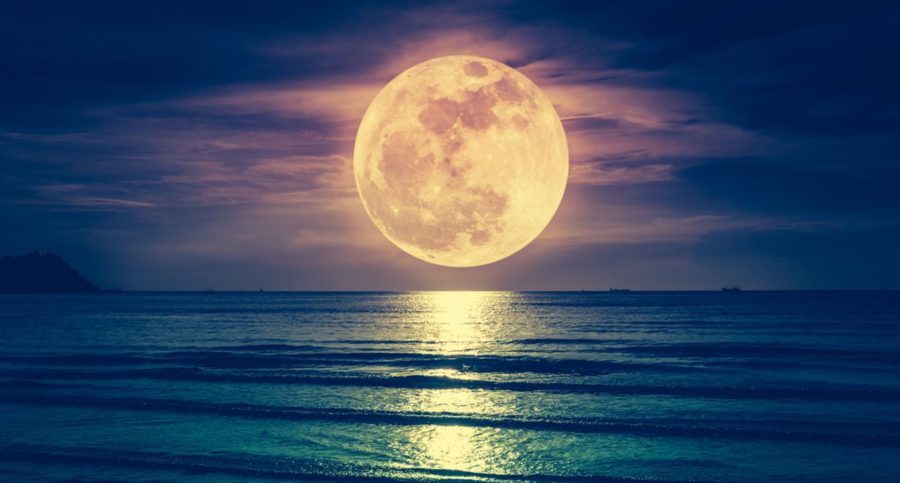Weather permitting, here is a guide as to how and when to see the “Super Flower Blood Moon Lunar Eclipse tonight
The following written content from Robert Lee Hotz
The only total lunar eclipse of 2021 takes place early Wednesday, as the full moon of May makes its closest approach to Earth and, bathed in an eerie Earth-glow, slips into shadow that turns it dusky red.
In a burst of celestial superlatives, enthusiastic skywatchers are calling the lunar display the super flower blood moon.
By any name, the eclipse—the first total lunar eclipse since 2019—promises a rare sky show. It will simultaneously combine three lunar phenomena: a supermoon, meaning the moon appears up to 14% bigger and 30% brighter in the sky as its orbit brings it closest to Earth, compared with when it is most distant from Earth; a total lunar eclipse, when the moon passes entirely within Earth’s shadow; and a blood moon, when light filtered through Earth’s atmosphere during an eclipse turns our natural satellite a rusty, reddish hue.

PHOTO: NASA’S SCIENTIFIC VISUALIZATION STUDIO
In folklore, the full moon in May is known as the flower moon because it occurs as spring blossoms in the Northern Hemisphere. The term was popularized by the Farmer’s Almanac, which attributes it to the Algonquin people of North America. The almanac notes that other Native American cultures have traditional names for May’s full moon, including the leaf-budding moon, egg-laying moon and frog moon.
Weather permitting, the eclipse will be visible across western North and South America, when the moon is setting in the early morning hours; and across Oceania, Australia and eastern Asia during moonrise in the evening. It will reach its peak, however, after the moon has set for most U.S. locations.
The eclipse will begin as the moon touches the edge of Earth’s shadow at 4:47 a.m. EDT, according to NASA’s eclipse page.
During a lunar eclipse, Earth passes between the sun and the moon, blocking the sunlight that normally illuminates the latter’s grayish-white cratered surface. Given the tilt of the moon’s orbit relative to Earth, the pair line up that way only about twice a year. Unlike a solar eclipse, a lunar eclipse is visible across Earth’s entire night side.
The moon will be completely shadowed by Earth for about 14 minutes and 31 seconds.
Lunar eclipses can safely be viewed with the naked eye. Special dark glasses are needed to avoid eye damage when viewing a solar eclipse.
During the eclipse, the moon’s shadow will fall across NASA’s solar-powered Lunar Reconnaissance Orbiter, which has been mapping the moon’s surface from lunar orbit since 2009. To conserve energy during such blackouts, NASA typically turns off the power to all but one of the orbiter’s sensors. Read more from WSJ





